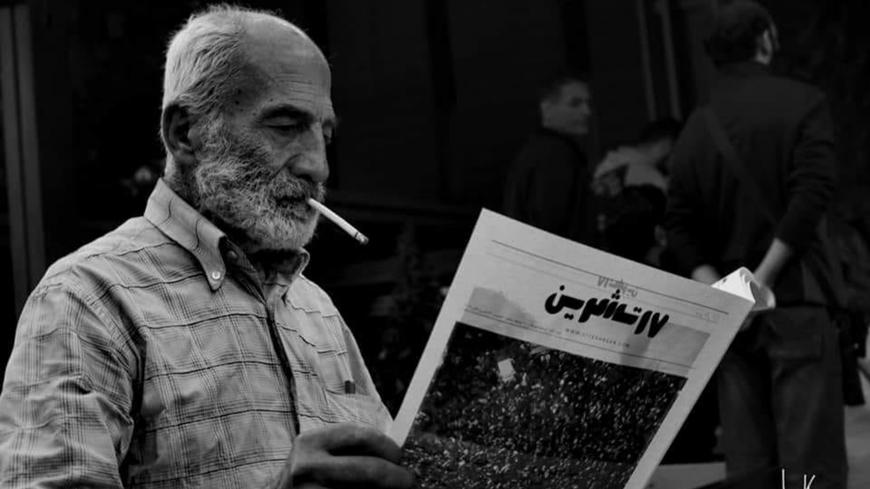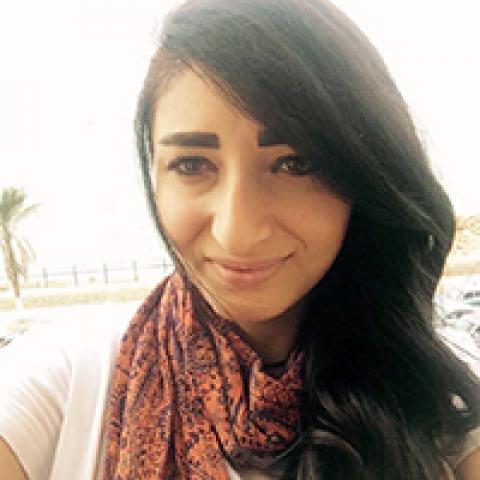BEIRUT — The first issue of 17 Teshreen Newspaper was published Nov. 28. The newspaper's name is Arabic for October 17, a reference to the day Lebanon's anti-government uprising began — an uprising that is ongoing and hasn't lost momentum.
Journalists and social activists started the monthly newspaper, which is free of charge and full of articles, illustrations, crosswords and other quizzes inspired by the popular protests that broke out amid deteriorating economic and social conditions in Lebanon.
Centered on the front cover of the black-and-white paper is a lyric from an Umm Kulthum song, "We are the people, there is nothing impossible for us.”
In an op-ed titled “Our street is free … our voice is free,” Lebanese film director Bashir Abu Zeid writes, “We wrote to people by the people … We decided to write in praise of our revolution and to document its events. Lebanon has risen up and will never be the same again.”
Contributions from journalists and activists abounded, including a piece from Lebanese journalist Khaled Saghieh titled, “The people want to take back the country.” Activist Ibrahim Halawi writes “Are we sectarian?” and activist Ward Ezzedine writes, “I am not an easy woman.”
Several writers from Syria and Egypt contributed pieces. Syrian writer Furat Hammoud's piece is titled “The intellectuals.”
The newspaper also features illustrated portraits of the late activist Alaa Abu Fakhr, and Hussein al-Attar. Another page chronologically documents the most important events over 50 days of popular protests.
“I discussed the idea of the newspaper with a friend of mine in one of the sit-ins on the fourth day of the demonstrations," Abu Zeid told Al-Monitor, "but it was postponed as we got busy with the events that took place. Initially, we wanted to issue it on Nov. 17, on the revolution’s first month anniversary.”
Five friends founded the newspaper and contacted writers and activists to write stories, Abu Zeid said. It took about two weeks to compile the paper. Abu Zeid said they printed 3,000 copies of the first issue to distribute at sit-ins in Beirut, Tripoli, Nabatiyeh and Tyre. He said they raised funds at the demonstrations, "especially from the Kafr Rumman roundabout in Nabatiyeh, and through contacts with friends."
A reprint of the first issue is already underway since the demand “exceeded our expectations,” Abu Zeid said. “We are working on the second issue, and the newspaper is open to anyone interested in contributing content that matches the paper's subjects.”
Abu Zeid explained that the newspaper is an alternative to other media outlets, which have come to serve political interests as opposed to popular ones. He said the newspaper explains why Lebanese are taking to the streets, and the nature of their demands. “At the same time, it helps in creating spaces for discussions," he said. "We hope that the newspaper will continue to be issued even if the protests are over.”
Khodr Salame, a contributor to the newspaper, told Al-Monitor, “The value of this newspaper lies in the fact that it is the first outlet that connects the various sit-in squares, the working groups with their different backgrounds and messages, the wave of popular protests and the Lebanese people in general. When the newspaper team contacted me, I was very excited, as I believed since day one in the need for a platform to share ideas.”
The newspaper was the topic of the day in Lebanon among demonstrators, who were eager to get a copy, especially since its website is still under construction. The newspaper is dear to the Lebanese, who are revolting for the first time since the end of the civil war in 1990.
“The idea of the newspaper is innovative," Zeinab Younis, a demonstrator in Beirut’s Martyrs’ Square, told Al-Monitor. "I think it is a precedent in Lebanon. The revolution’s newspaper documents the events in an objective way, also mentioning all the slogans and the people who died during the protests. The newspaper will have a great impact on future generations. Remarkably, it also includes the opinion of young people and activists who are not originally journalists.”
Ali al-Zain, another demonstrator, was happy with the newspaper's first issue. “We, the revolutionaries, are very pleased with this first newspaper that is a great platform to cover the revolution’s events,” he said
“It reflects the opinion of the people and speaks to them in their language,” another protester, Bissan Makka, said.






